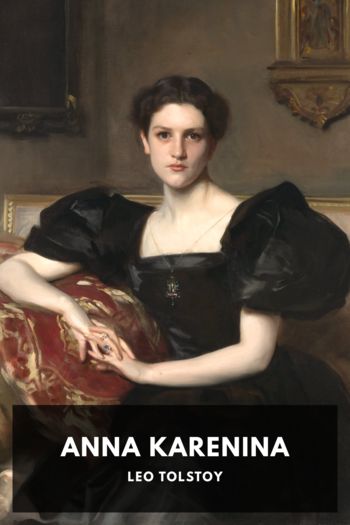What Is Art? Leo Tolstoy (good books to read for 12 year olds TXT) 📖

- Author: Leo Tolstoy
Book online «What Is Art? Leo Tolstoy (good books to read for 12 year olds TXT) 📖». Author Leo Tolstoy
The tyranny of the St. Petersburg bureaucracy is more dramatic, but less omnipresent—and probably far less fatal to the capacity to enjoy art—than the tyranny of our respectable, self-satisfied, and property-loving middle-class. I am therefore afraid that we have no great number of “unperverted” country labourers to compare with those of whom Tolstoy speaks—and some of whom I have known personally. But the truth Tolstoy elucidates lies far too deep in human nature to be infringed by such differences of local circumstance. Whatever those circumstances may be, the fact remains that in proportion as a man approaches towards the condition not only of “earning his subsistence by some kind of labour,” but of “living on all its sides the life natural and proper to mankind,” his capacity to appreciate true art tends to increase. On the other hand, when a class settles down into an artificial way of life—loses touch with nature, becomes confused in its perceptions of what is good and what is bad, and prefers the condition of a parasite to that of a producer—its capacity to appreciate true art must diminish. Having lost all clear perception of the meaning of life, such people are necessarily left without any criterion which will enable them to distinguish good from bad art, and they are sure to follow eagerly after beauty, or “that which pleases them.”
The artists of our society can usually only reach people of the upper and middle classes. But who is the great artist?—he who delights a select audience of his own day and class, or he whose works link generation to generation and race to race in a common bond of feeling? Surely art should fulfil its purpose as completely as possible. A work of art that united everyone with the author, and with one another, would be perfect art. Tolstoy, in his emphatic way, speaks of works of “universal” art, and (though the profound critics hasten to inform us that no work of art ever reached everybody) certainly the more nearly a work of art approaches to such expression of feeling that everyone may be infected by it—the nearer (apart from all question of subject-matter) it approaches perfection.
But now as to subject-matter. The subject-matter of art consists of feelings which can be spread from man to man, feelings which are “contagious” or “infectious.” Is it of no importance what feelings increase and multiply among men?
One man feels that submission to the authority of his church, and belief in all that it teaches him, is good; another is embued by a sense of each man’s duty to think with his own head—to use for his guidance in life the reason and conscience given to him. One man feels that his nation ought to wipe out in blood the shame of a defeat inflicted on her; another feels that we are brothers, sons of one spirit, and that the slaughter of man by man is always wrong. One man feels that the most desirable thing in life is the satisfaction obtainable by the love of women; another man feels that sex-love is an entanglement and a snare, hindering his real work in life. And each of these, if he possess an artist’s gift of expression, and if the feeling be really his own and sincere, may infect other men. But some of these feelings will benefit and some will harm mankind, and the more widely they are spread the greater will be their effect.
Art unites men. Surely it is desirable that the feelings in which it unites them should be “the best and highest to which men have risen,” or at least should not run contrary to our perception of what makes for the well-being of ourselves and of others. And our perception of what makes for the well-being of ourselves and of others is what Tolstoy calls our “religious perception.”
Therefore the subject-matter of what we, in our day, can esteem as being the best art, can be of two kinds only—
(1) Feelings flowing from the highest perception now attainable by man of our right relation to our neighbour and to the Source from which we come. Dickens’ Christmas Carol, uniting us in a more vivid sense of compassion and love, is a ready example of such art.
(2) The simple feelings of common life, accessible to everyone—provided that they are such as do not hinder progress towards well-being. Art of this kind makes us realise to how great an extent we already are members one of another—sharing the feelings of





Comments (0)